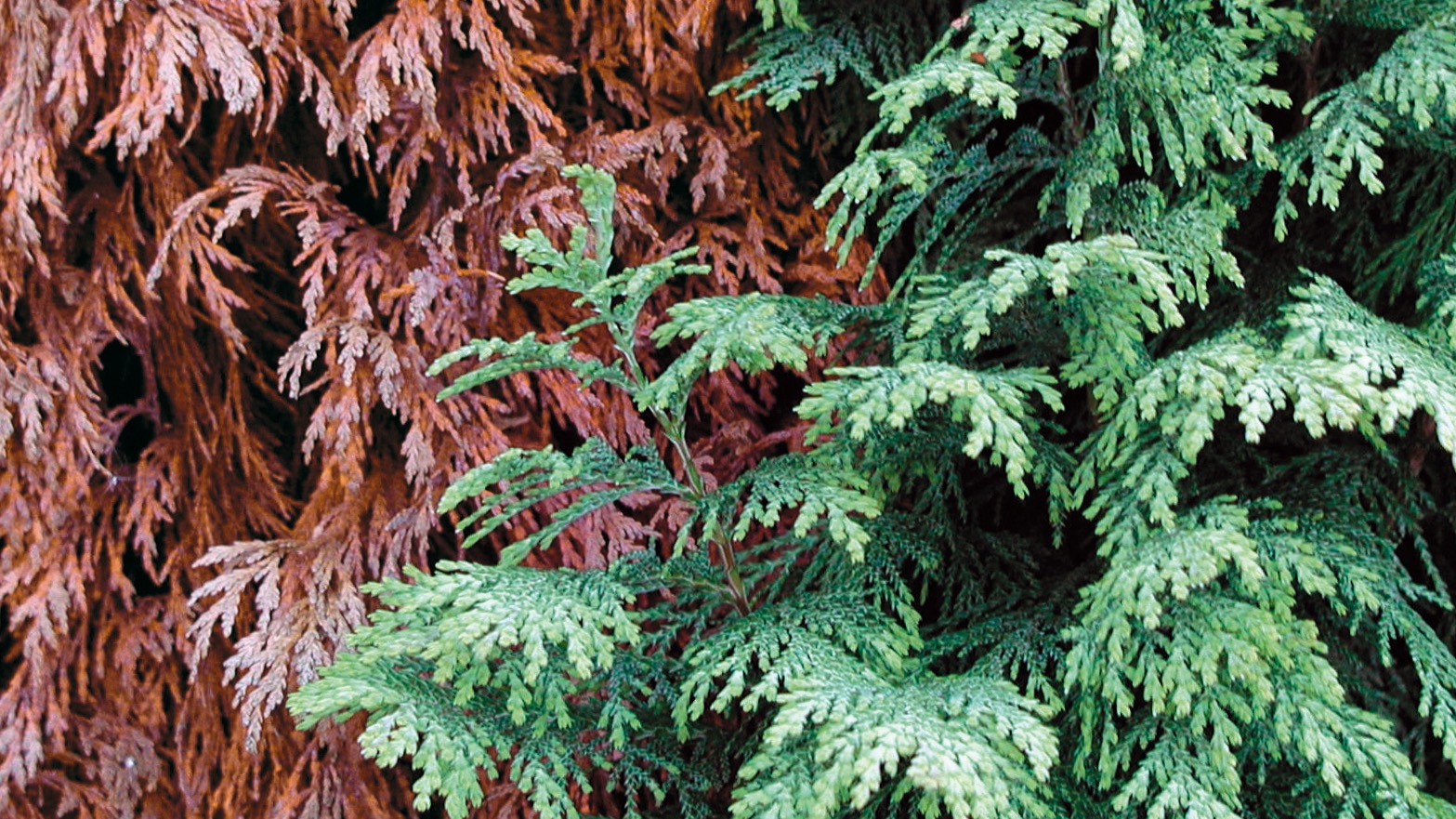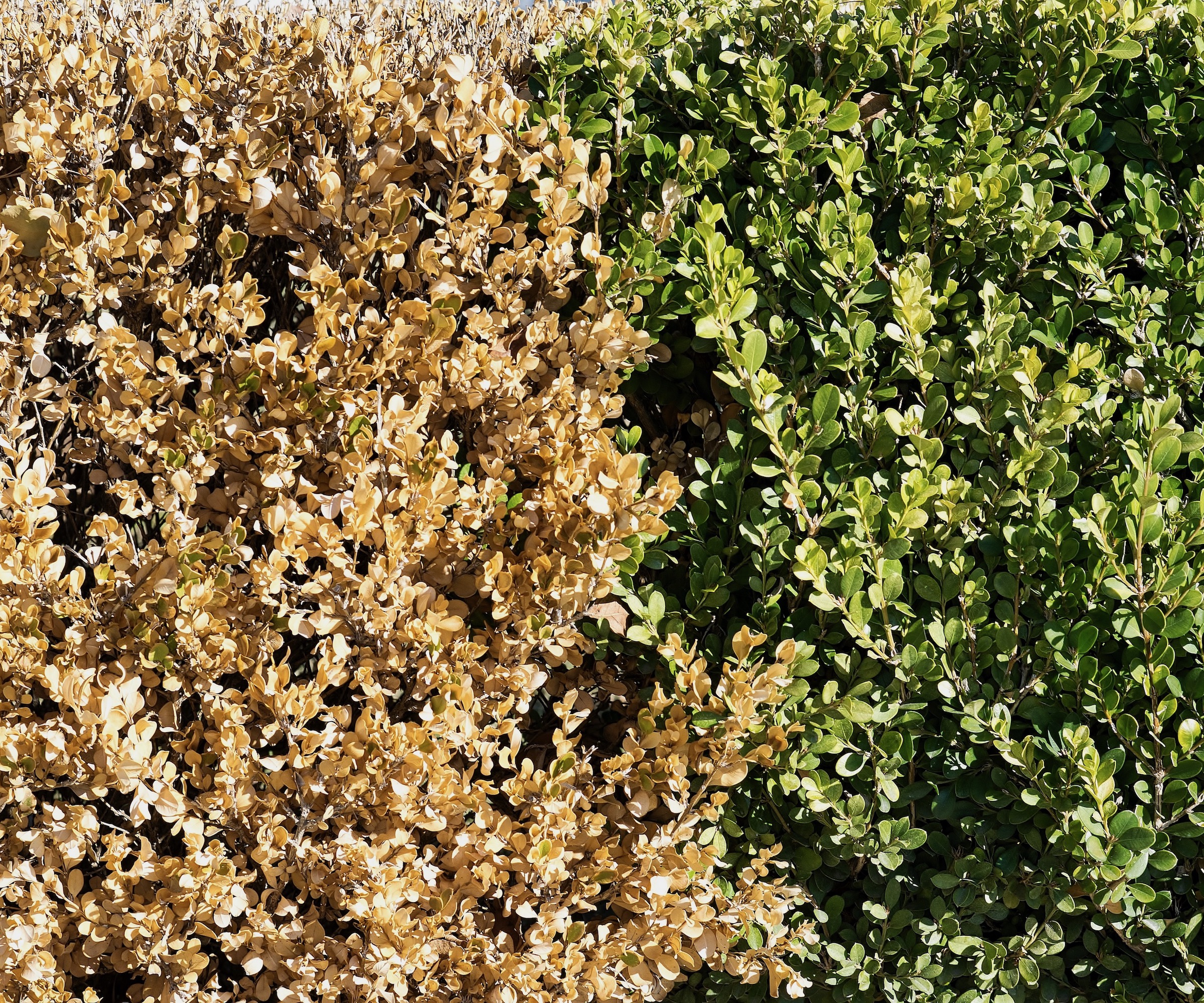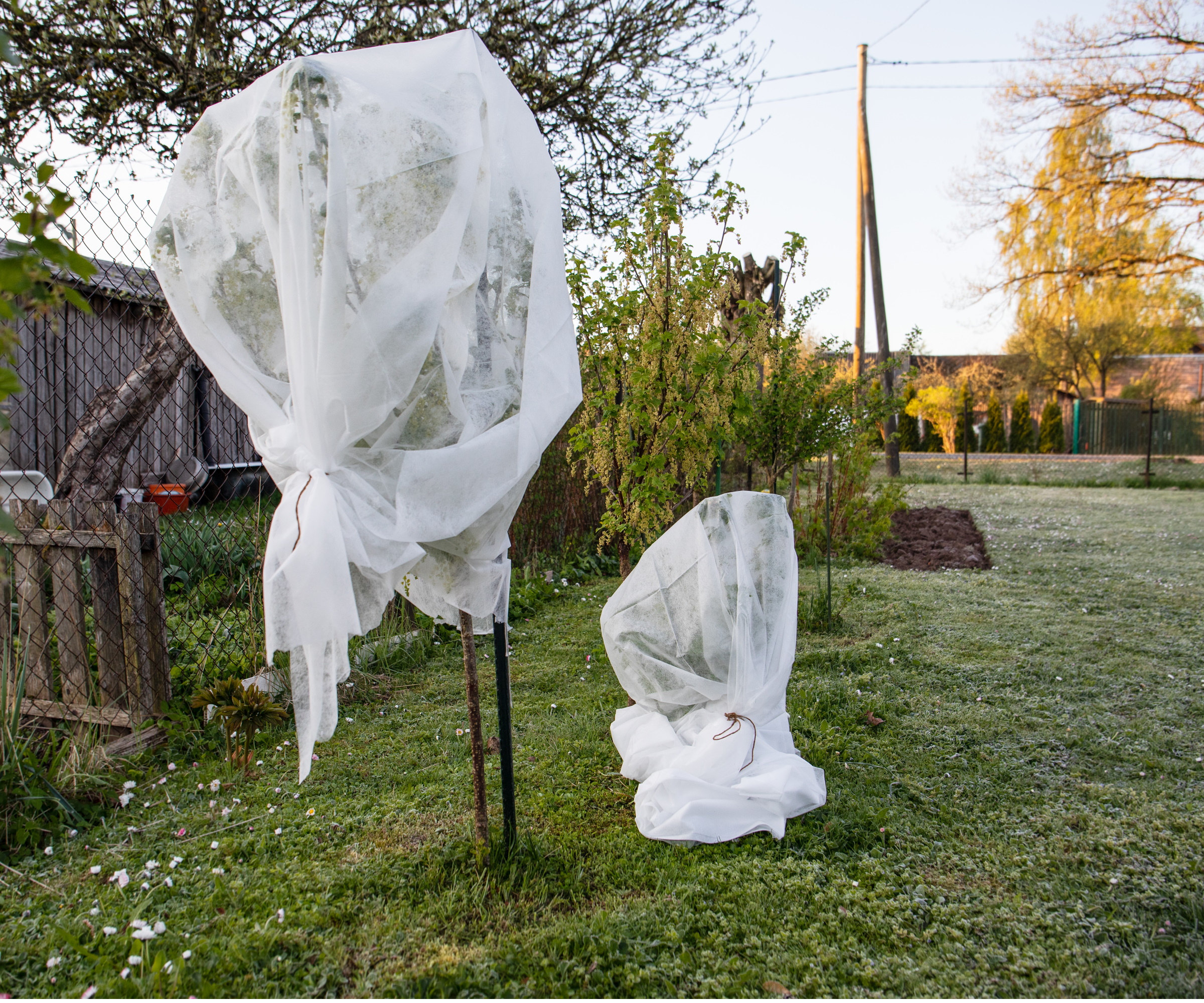What is winter burn and how do you prevent it from blighting your evergreens?
Sudden drops in temperature can make your hardy trees and plants appear as though parts of them are dying


In the deep midwinter, evergreens offer a vibrant flash of color in the otherwise bare and leafless yard. But in spite of their renowned hardiness, they too can suffer from the consequences of plunging temperatures.
Winter burn can leave the green foliage looking scorched and brown. And though burn implies heat, it is caused by the opposite – extreme cold – which means the trees, plants and bushes can’t draw up moisture from frozen soil. Winter snow can hide the worst of it under a picturesque white blanket. But as the thaw sets in, half of the evergreen can appear dead or dying.
We asked our experts how to prevent this blight on some of its winter garden stars, and how you can restore them to lush color even after they’ve been damaged.

What is winter burn?
‘This is basically when cold temperatures, harsh winds, and even winter sun team up to dry out the needles on evergreens,’ says landscaper Bryan Clayton. ‘When the ground’s frozen, the plant can’t pull up water to replace what it’s losing. That’s when you start to see damage.’
Signs of winter burn include a desiccated look to the needles or leaves, particularly on the tips or the edge, which turn yellow or brownish. The sides exposed to the wind or sun can be most affected.
‘It’s like a bad winter tan for your plants, and it can make a perfectly healthy evergreen look rough by spring,’ adds Bryan.
Winter burn can strike plants with needles, such as fir, hemlock, pine, spruce and yew; those with broad leaves like boxwood, holly and rhododendron; and scale-like leaves, which are found on arborvitae, false cypress and juniper.
They are particularly vulnerable growing in open, unprotected locations where they are exposed to severe winters, which can be found in US hardiness zones 3-7 where there are frequent changes in temperature, wind and sunlight.

An experienced landscaper, Bryan has started and co-founded two companies dedicated to yard and lawn maintenance, including Peachtree Inc, covering Tennesee, and lawncare platform GreenPal.
How to prevent winter burn

One of the best ways to avoid winter burn is by choosing plants that are best suited for the region you want to grow it in, advises Sal Musto of SalCorp Landscaping.
‘In areas like zone 6, where freezing and thawing cycles are frequent, it's particularly essential to choose wind-resistant and drought-tolerant evergreen varieties.
‘For instance, I’ve had success with Norway spruce, which tends to handle winter conditions better in our projects around Massachusetts.’
‘The most important prevention is to only select evergreens that grow well in your climate,’ agrees Tom Monson, who owns a lawn and landscaping company.
‘After you’ve planted the right species, water your evergreens thoroughly well into fall. This helps to make sure that they have healthy roots that can replace water lost to wind and cold.'
Mulching is key

‘Apply a thick layer of mulch around them (but not touching the trunk),' adds Tom. 'This will help the soil retain water.’
You can use an organic mulch that you have created from dead plant material gathered over a summer of yard maintenance, such as leaves, grass clippings and compost. You can also use wood chippings or straw, such as this Soil Sunrise natural cedar shavings garden mulch from Target or CleanStraw natural straw mulch from Target.
It is important to keep some space between the mulch and the base of the tree in a technique known as donut mulching, where there is a clear hole in the middle of the mulch which is spread out around the tree and over its roots.
Piling the mulch up high so it looks like a volcano with a plant erupting from the middle can cause the wood it covers to decay, while the thick and heavy layer smothers the roots. It can also encourage pests to nibble through the mulch and attack the tree.

Sal has over two decades of experience dedicated to enhancing outdoor spaces. He has established SalCorp Landscaping & Construction as a trusted name in landscaping, hardscaping, and snow removal services in Walpole, MA.

Tom started his lawn care company as a teenager with a push mower and a truck paid for with tip money from working as a busboy. Over the years, he's built up Monson Lawn and Landscaping so it now services hundreds of residential and commercial properties in the Twin Cities area.
Keep your trees covered in winter

We add layers of fabric to keep out the winter cold – and you can do the same for your evergreens. Adding a windbreak will help to cut down on the tree’s exposure to harsher elements.
‘Burlap screens or wraps are a lifesaver for those more exposed plants,’ says Bryan Clayton. ‘Just make sure you’re not wrapping them too tight – they still need to breathe.’
This Svepndic winter burlap plant cover bag with drawstring from Amazon, is reusable so can be used winter after winter.
Another cover you can apply is to the leaves of your evergreen, by spraying on a waxy coating.
‘I recommend proactive measures to prevent winter burn, such as applying an anti-desiccant spray in late fall to help reduce moisture loss,’ suggests Sal.
The anti-desiccant will help keep the precious water in the leaf/needle for up to four months in the winter, as the plants and trees struggle to draw it up from the frozen soil.
You can make your own anti-desiccant spray by mixing one drop of pine oil to one gallon of water and spritzing on the greenery. Or you can buy one ready prepared, such as the Wilt-Pruf® plant protector concentrate from Walmart.
Treating trees with winter burn
If your evergreen has succumbed to winter burn, don’t give up hope – it can be revived after pruning off the brown and brittle parts.
‘Water and fertilize it in the spring,’ advises Tom. ‘Once it has produced new growth, remove the dead stems. Once again, mulch around the tree to retain moisture in the soil.’
‘Come spring, trim off the dead parts and give the plant some TLC. They’re tougher than they look and usually bounce back,’ agrees Bryan.
Adding nutrients through a tree food like Miracle-Gro 12-6-12 spikes from Lowe’s could prove the perfect pick-me-up as the weather warms.
A traditional tree is the showstopper of any Christmas scene. But some varieties can struggle indoors and start shedding before Santa comes to call. In our expert guide to keeping your Christmas tree alive, we look at ways to keep your festive foliage looking its best and your floors needle-free.
Sign up to the Homes & Gardens newsletter
Design expertise in your inbox – from inspiring decorating ideas and beautiful celebrity homes to practical gardening advice and shopping round-ups.

Alison is a contributing gardens writer for Homes & Gardens, writing on a range of topics from plant care to garden design. She has recently landscaped the outside space of her Victorian home, replacing crazy paving and cracked slabs with new lawn, and is currently cultivating a fruit bed.
-
 This is the single best upright vacuum we've ever tested – and it's on offer with $130 off at Shark for a limited time only
This is the single best upright vacuum we've ever tested – and it's on offer with $130 off at Shark for a limited time onlyYou won't want to miss this one
By Dan Fauzi
-
 Nate Berkus says slipcovered sofas are back on trend – and I just found a way to create this designer-approved laid-back look from just $86
Nate Berkus says slipcovered sofas are back on trend – and I just found a way to create this designer-approved laid-back look from just $86This classic style is making a strong comeback, but did you know you don't have to buy a whole new couch to get this Nate-approved look?
By Eleanor Richardson